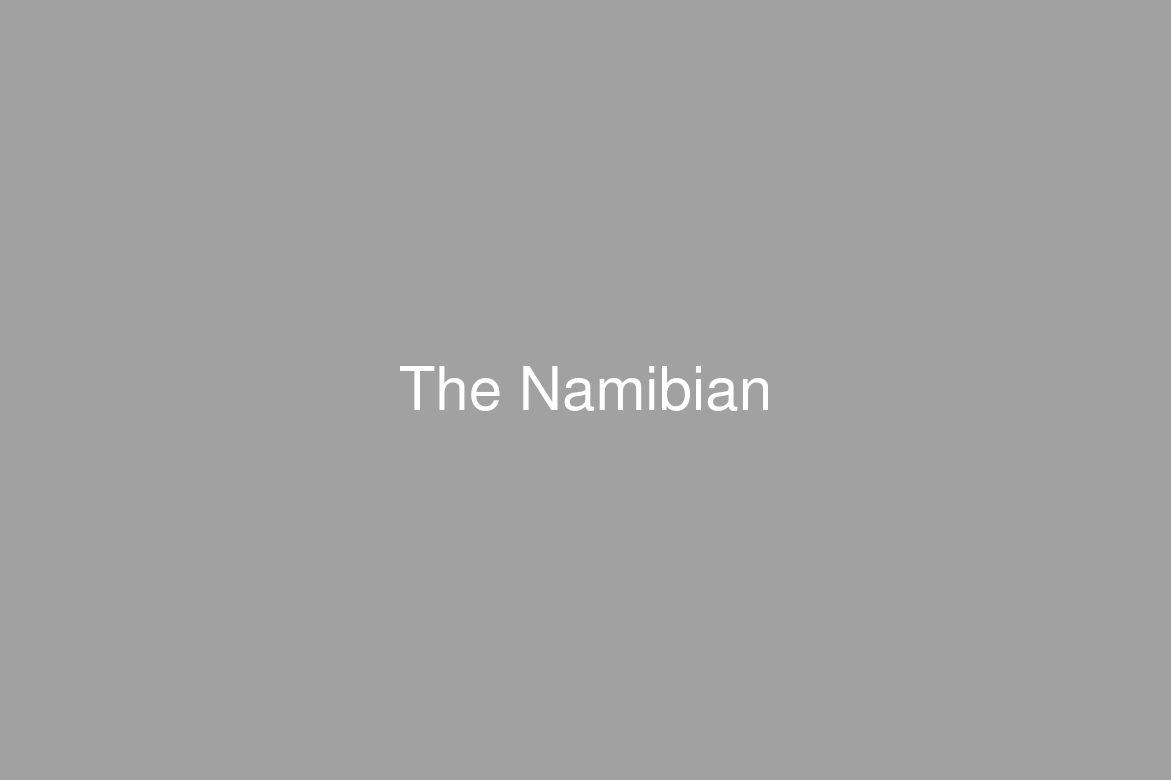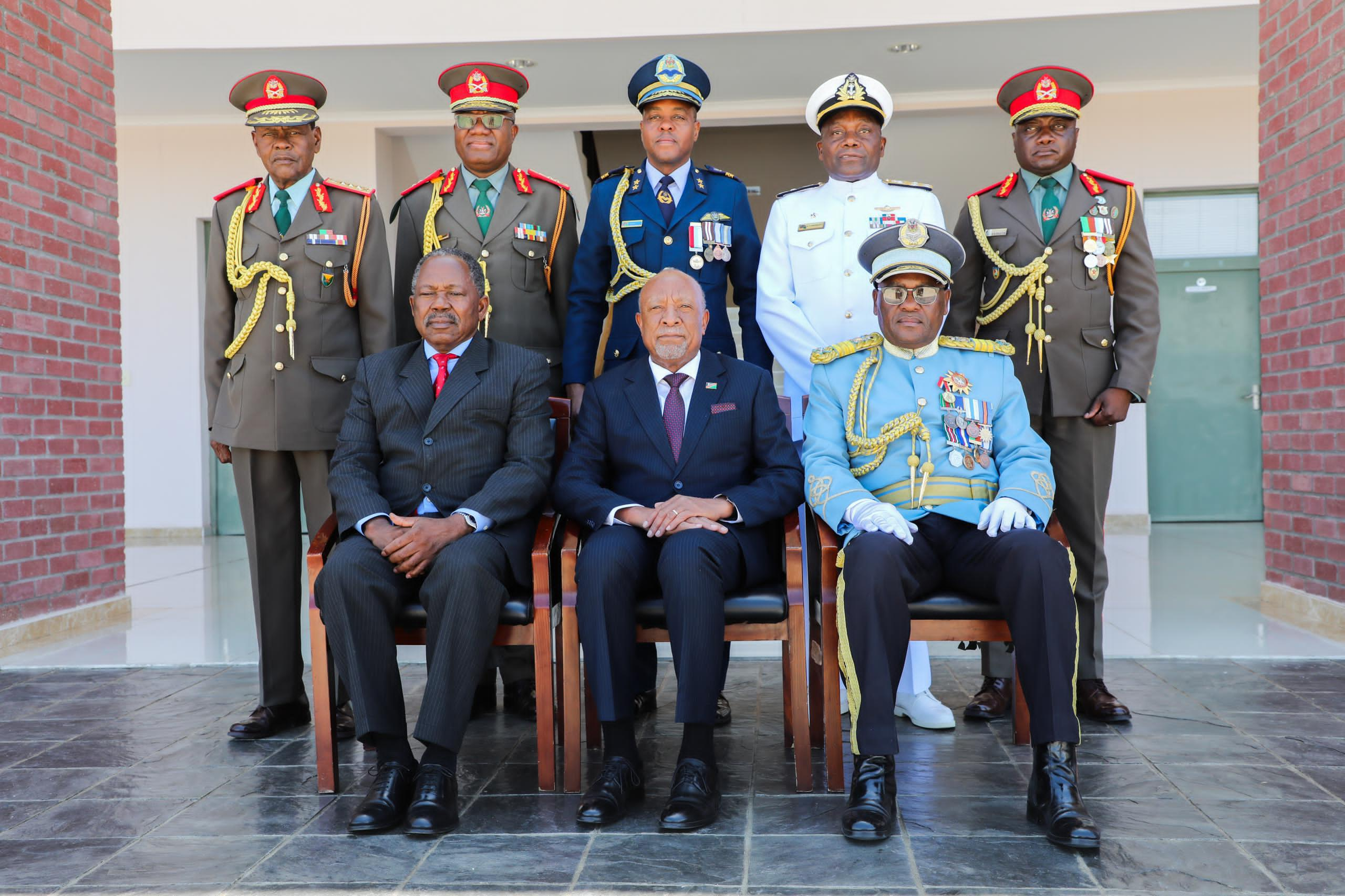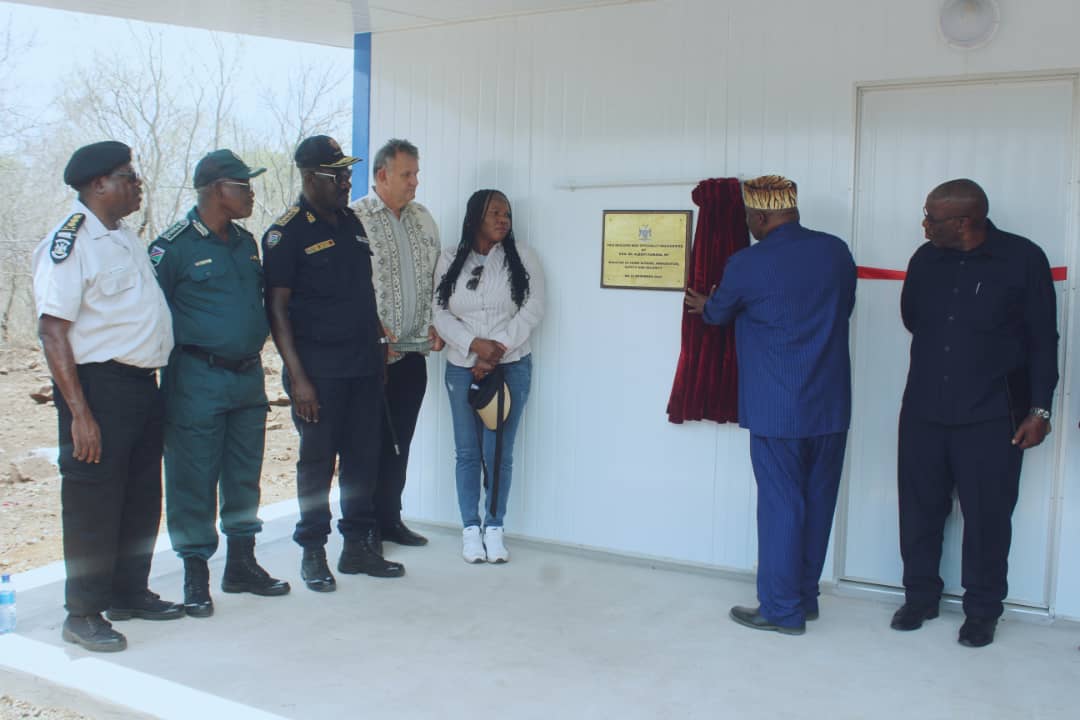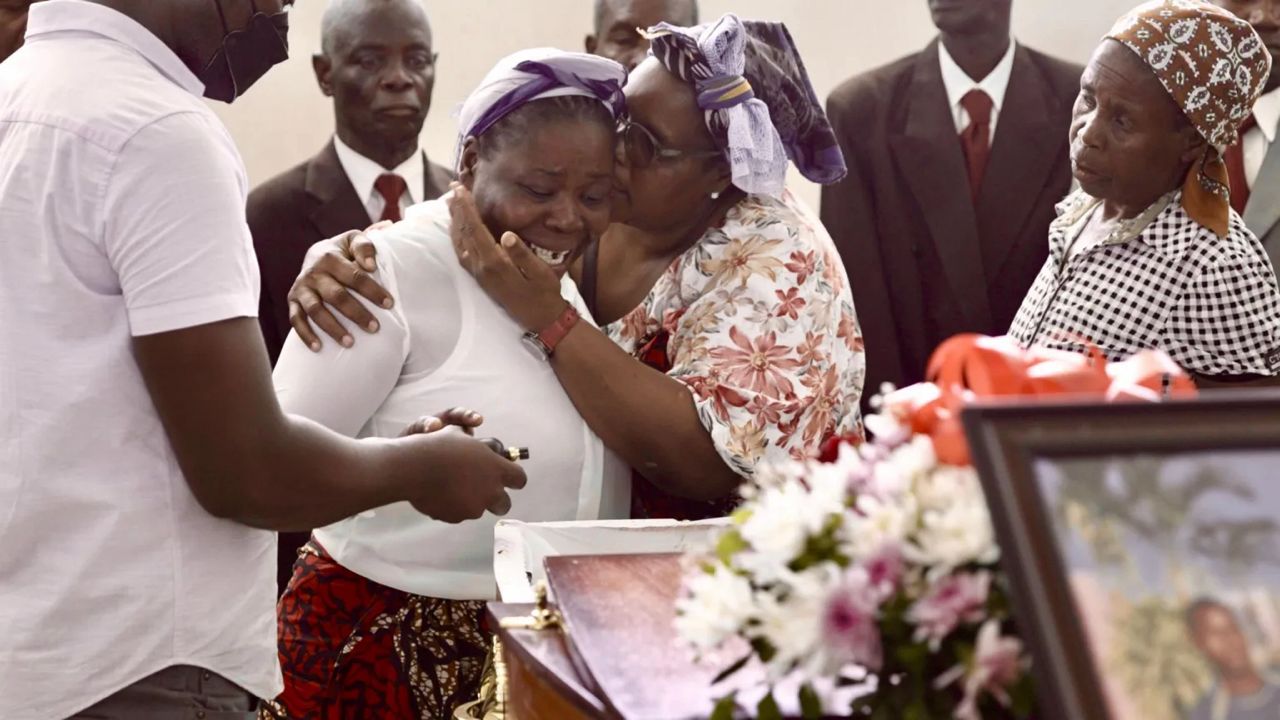A s the sky lightens to the east, a chill dry wind whips over the barren hills from the west.
Three figures huddle around the hilltop campfire, shielded from the cutting winds by chest-high stone walls. A few dozen metres away stands the sturdy shack in which the men sleep.This is the camp of small gemstone miner Alfred Uirab, or ‘Old Namab’ as he is better known between the Brandberg and the Namib Desert, on a hill dubbed ‘#oaxa si stu //goaxa si /gai’ in Damara, translating to ‘climbing up is bad, coming down is good’.At around 06h00 the three men make their way to the hilltop quarry where a rock-face has been cleared and where they hope to strike pockets of amethyst crystals.”I hope to get something out of there soon,” says Uirab (61).At around 07h30, in the lee of a hilltop rock outcropping, the generator sputters to life and the grumble of the Makita drill cuts through the silence.Uirab drills holes in the rock for about 10 minutes and then picks up the eight-pound hammer to pound chisels into the cracks.The usual work routine is to drill for about ten minutes, to save petrol, and then use the hammers to crack open the rocks.While the old miner drills and hammers, his workers, Andreas Nghiwedha (19) and Ivan Goseb (33), cart away boulders and clear the quarry.He has been mining the rock-face at a loss of N$17 000 over the last four months, says Uirab, who says his monthly expenses on salaries (excluding his own), food, water, wood and petrol come to about N$5 000.And he is running out – there’s only five litres of petrol left and the mealie meal ran out at breakfast.The ground is littered with broken amethyst ‘scepters’ and ‘roses’, which could have fetched thousands of Namibia dollars from collectors and dealers.Buyers don’t buy broken crystals and all they’re good for now is a ‘tumble’, a collection of different gemstones sold cheaply as a packet.”I don’t know what I’ve been doing here for the last five months,” says Uirab.In a few weeks he’ll stop working the rock-face and move to another of his claims further to the west.Old Namab has four claims, which he mines one at a time.One of the main problems is that miners don’t respect one another’s claims, he says, pointing to four ‘pockets’ equally spaced along the rock-face where other miners extracted crystals while he had been away at the beginning of the year.He says he heard that the extracted gemstones were sold for close to N$150 000 to collectors and dealers at the coast.”You work yourself to death only for another man to come and steal your things,” says Uirab.At midday the work breaks off and Ivan Goseb is sent the four kilometers across the barrenness to the settlement of Xobobos for mealie meal.Xobobos is a collection of ramshackle corrugated iron and sack shacks on a windswept clearing overlooked by the black-bouldered Xobobos mountain.Roughly 55 small miners call the settlement home.On this Saturday there are three women in the settlement.Shortly after Goseb arrives, two white mini-buses pull up and tourists pile out.The miners scramble to their shacks to get out their stones and come kneel in a row in the centre of the clearing.Alfred Lukas (36) puts away his stones.”This is a waste of time,” he says, only having exchanged a small crystal for a shirt and some water containers.Lukas was trying to sell a pair of purplish crystals for N$5 000 and a triplet of dusky crystals for N$3 000.The miners don’t usually sell to tourists because they only pass through once in a while.Lukas has been mining at Xobobos since 1994 and says he has never been paid the price he has asked for his crystals.”It’s not easy work, but what can we do,” says Festus ‘Kabila’ Nghilime (37), who has been mining here since 1996.Food stocks in the settlement are running low, as is the water, and everyone has flaked lips.Earlier in the year Okorusu mine donated four water tanks, with a combined capacity of just over 3 000 litres, to the settlement, which previously had to haul water from Uis, more than 70 kilometres away.The miners buy meagre supplies from one another.Up on his hill, Old Namab, who has been mining at the edge of the Namib Desert since 1976, kept working through the blistering midday.He says he would like to retire at the end of 2009, but doesn’t know yet what he’ll do with his claims after that.He still dreams of striking it lucky.”With the right equipment I won’t make less than N$50 000 here,” he says.”But this poer-poer …”As the early evening cold winds whip up violently again across the barrenness, Alfred Uirab turns for home.”This wild life must come to an end,” he says.”At this age you shouldn’t be working this hard.”A few dozen metres away stands the sturdy shack in which the men sleep.This is the camp of small gemstone miner Alfred Uirab, or ‘Old Namab’ as he is better known between the Brandberg and the Namib Desert, on a hill dubbed ‘#oaxa si stu //goaxa si /gai’ in Damara, translating to ‘climbing up is bad, coming down is good’.At around 06h00 the three men make their way to the hilltop quarry where a rock-face has been cleared and where they hope to strike pockets of amethyst crystals.”I hope to get something out of there soon,” says Uirab (61).At around 07h30, in the lee of a hilltop rock outcropping, the generator sputters to life and the grumble of the Makita drill cuts through the silence.Uirab drills holes in the rock for about 10 minutes and then picks up the eight-pound hammer to pound chisels into the cracks.The usual work routine is to drill for about ten minutes, to save petrol, and then use the hammers to crack open the rocks.While the old miner drills and hammers, his workers, Andreas Nghiwedha (19) and Ivan Goseb (33), cart away boulders and clear the quarry.He has been mining the rock-face at a loss of N$17 000 over the last four months, says Uirab, who says his monthly expenses on salaries (excluding his own), food, water, wood and petrol come to about N$5 000.And he is running out – there’s only five litres of petrol left and the mealie meal ran out at breakfast. The ground is littered with broken amethyst ‘scepters’ and ‘roses’, which could have fetched thousands of Namibia dollars from collectors and dealers.Buyers don’t buy broken crystals and all they’re good for now is a ‘tumble’, a collection of different gemstones sold cheaply as a packet.”I don’t know what I’ve been doing here for the last five months,” says Uirab.In a few weeks he’ll stop working the rock-face and move to another of his claims further to the west.Old Namab has four claims, which he mines one at a time.One of the main problems is that miners don’t respect one another’s claims, he says, pointing to four ‘pockets’ equally spaced along the rock-face where other miners extracted crystals while he had been away at the beginning of the year.He says he heard that the extracted gemstones were sold for close to N$150 000 to collectors and dealers at the coast.”You work yourself to death only for another man to come and steal your things,” says Uirab.At midday the work breaks off and Ivan Goseb is sent the four kilometers across the barrenness to the settlement of Xobobos for mealie meal.Xobobos is a collection of ramshackle corrugated iron and sack shacks on a windswept clearing overlooked by the black-bouldered Xobobos mountain.Roughly 55 small miners call the settlement home.On this Saturday there are three women in the settlement.Shortly after Goseb arrives, two white mini-buses pull up and tourists pile out.The miners scramble to their shacks to get out their stones and come kneel in a row in the centre of the clearing.Alfred Lukas (36) puts away his stones.”This is a waste of time,” he says, only having exchanged a small crystal for a shirt and some water containers.Lukas was trying to sell a pair of purplish crystals for N$5 000 and a triplet of dusky crystals for N$3 000.The miners don’t usually sell to tourists because they only pass through once in a while.Lukas has been mining at Xobobos since 1994 and says he has never been paid the price he has asked for his crystals. “It’s not easy work, but what can we do,” says Festus ‘Kabila’ Nghilime (37), who has been mining here since 1996. Food stocks in the settlement are running low, as is the water, and everyone has flaked lips.Earlier in the year Okorusu mine donated four water tanks, with a combined capacity of just over 3 000 litres, to the settlement, which previously had to haul water from Uis, more than 70 kilometres away.The miners buy meagre supplies from one another.Up on his hill, Old Namab, who has been mining at the edge of the Namib Desert since 1976, kept working through the blistering midday.He says he would like to retire at the end of 2009, but doesn’t know yet what he’ll do with his claims after that.He still dreams of striking it lucky.”With the right equipment I won’t make less than N$50 000 here,” he says.”But this poer-poer …”As the early evening cold winds whip up violently again across the barrenness, Alfred Uirab turns for home.”This wild life must come to an end,” he says.”At this age you shouldn’t be working this hard.”
Stay informed with The Namibian – your source for credible journalism. Get in-depth reporting and opinions for
only N$85 a month. Invest in journalism, invest in democracy –
Subscribe Now!






